Sights in the Northern part of St Petersburg
On Aptekarsky Island
Feodor Chaliapin House-Museum
- 2Б Ulitsa Graftio
- Petrogradskaya
- http://www.theatremuseum.ru/ru/brn_shl.html
- 12:00 - 19:00 (Wednesdays: 13:00 - 21:00). Closed on Mondays, Tuesdays and the last Friday of the month.
In 1975 the Feodor Chaliapin House-Museum was opened in the apartment where the great Russian opera singer lived from 1915 to 1922. It was his last address in Russia, before leaving to live abroad. The apartment was confiscated by the Soviet state in 1927 which accused Chaliapin of aiding White émigrés in Paris, however Chaliapin's secretary Isai Dvorishin was able to save much of the furniture which was later given to the museum. As well as the interior of the apartment itself,… Read more »
History of Photography Museum
- 23 Ulitsa Professora Popova
- Petrogradskaya
- http://www.photohismus.spb.ru/
- 13:00 - 17:00. Closed on Sundays and Mondays
Opposite to the St Petersburg Avant-Garde Museum is the History of Photography Museum and as its name suggests it details the development of photography from its very early days until modern times. On display are many examples of cameras across the ages. The museum also has premises for holding various temporary photo exhibitions. Read more »
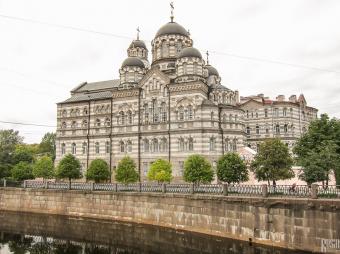
Ioannovsky Convent
- 45 Naberezhnaya Reki Karpovki
- Petrogradskaya
- http://imonspb.ru/
St Petersburg Ioannovsky Convent was founded at the end of the 19th century by the priest Ioann, who was later canonised as St John (Ioann) of Kronstadt. It was dedicated to St John (Ioann) of Rila. Its main cathedral is the Twelve Apostles Cathedral which was built between 1900 and 1902 in the Byzantine revival architectural style. There are also two small chapels, one dedicated to St Seraphim of Sarov and a modern one dedicated to the Intercession of the Virgin Mary. In 1923 the… Read more »
St Petersburg Avant-Garde Museum
- 10 Ulitsa Professora Popova
- Petrogradskaya
- http://www.spbmuseum.ru/
- 11:00 - 18:00 (Fridays: 13:00 - 20:00). Closed on Mondays.
The St Petersburg Avant-Garde Museum is located in the mid-19th century wooden house where the avant-garde artist Mikhail Matyushin lived with his poet and artist wife Yelena Guro. Other leading members of the avant-garde movement visited the house, including Konstantin Malevich and Vladimir Mayakovsky. After his death, Matyushin left the house to a literary fund and it was turned into a museum in 2006. Its exhibits detail the establishment, history and various aspects of St… Read more »
Vladimir Komarov Botanical Museum and Gardens
- 2 Ulitsa Professora Popova
- Petrogradskaya
- http://www.binran.ru/structure/museum
- 11:00 - 17:00. Closed on Mondays and Fridays.
St Petersburg's Botanical Gardens is run as part of the Vladimir Komarov Botanical Institute of the Russian Academy of Science. They are some of the oldest botanical gardens in Russia having been founded by Peter the Great in 1714 as a herb garden for medicinal plants. Today the gardens consist of a park, which is partly organised as an English Garden, and 25 green houses, one of which features a pond with water lilies. A famous attraction is the Queen of the Night cactus which… Read more »
On Petrogradsky Island
300th Anniversary of the Russian Fleet Monument
- Corner of Petrovskaya Naberezhnaya and Petrogradskaya Naberezhnaya
- Gorkovskaya
In 1996 a monument was unveiled in the very south-eastern corner of Petrogradsky Island to commemorate the 300th Anniversary of the Russian Fleet, which is considered to have been founded in 1696. The monument consists of a statue of Nika, the Greek goddess of victory, holding a model of a ship in her hands. Read more »
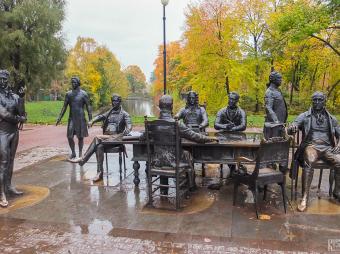
Aleksandrovsky Park
- Kronverksky Prospekt
- Gorkovskaya
Aleksandrovsky Park (not to be confused with Aleksandrovsky Gardens) surrounds the crownwork of the Peter and Paul Fortress inside the semi-circle formed by Kronverkskaya Naberezhnaya and Kronverksky Prospekt. It was opened on the initiative of Emperor Alexander I and named in his honour. In the west of the park is the Leningradsky Zoo which was founded in 1865 and now holds around 600 species of animals. Also here is the city's planetarium. Monument to the First Architects of St… Read more »
Artillery Museum
- 7 Aleksandrovsky Park
- Sportivnaya, Gorkovskaya
- www.artillery-museum.ru/
- 11:00 - 18:00. Closed on Mondays, Tuesdays and the last Thursday of the month.
St Petersburg's Artillery Museum is official called the Military Historical Museum of Artillery, Engineers and Signal Corps and is considered to have been founded in 1703 when Peter the Great ordered that old cannons be preserved. It has been located in the crownwork of the Peter and Paul Fortress since 1869 and today is one of the largest military museums in the world with hundreds of thousands of expositions, including cannons, self-propelled guns and rocket launchers. The museum… Read more »
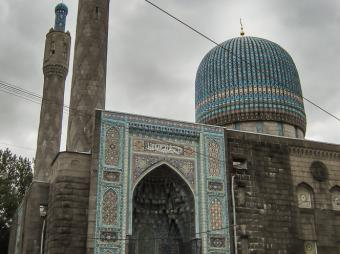
Congressional Mosque
- 7 Kronverksky Prospekt
- Gorkovskaya
- http://dum-spb.ru/kontakty
St Petersburg's Congressional Mosque was once the largest mosque in Europe (excluding Turkey), but now it is not even the largest in Russia since the construction of the Heart of Chechnya Mosque in Grozny. Nevertheless it is still an impressive building, beautifully decorated with colourful tiles, reminiscent of the great mosques on the silk road in Uzbekistan. The was built between 1910 and 1920 after the mufti of Orenburg obtained the approval for such from the government. The… Read more »
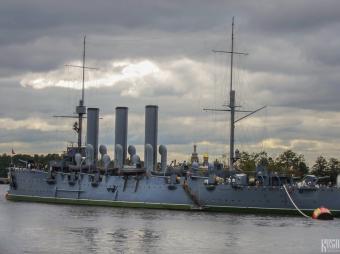
Cruiser Avrora Museum
- Opposite 2 Petrovskaya Naberezhnaya
- Gorkovskaya
- http://www.aurora.org.ru/
- 10:30 - 16:00. Closed on Mondays and Fridays.
The Avrora was built in St Petersburg and launched in 1900 and saw active serviced during the Russo-Japanese War and the First World War. It is for the role it played during the Russian Revolution that the cruiser is better known today and why it has been preserved as a museum. On 25 October 1917 a blank shot was fired from the Avrora to signify the start of the assault on the Provisional Government in the Winter Palace and the beginning of the Bolsheviks' October Revolution… Read more »
Decembrist Obelisk
- Artilleriysky Island
- Gorkovskaya
In December 1825 a group of army officers, who became known as the Decembrists, led soldiers in a revolt which took place on St Petersburg's Senatskaya Ploschad (Senate Square) against the ascension of Emperor Nicholas I and demanding a constitution and the abolishment of autocracy. The uprising was unsuccessful and ended in bloodshed. In 1926 five of the leaders (Pavel Pestel, Kondraty Ryleev, Sergey Kakhovsky, Sergey Muraviev-Apostol and Mikhail Bestuzhev-Ryumin) were publically… Read more »
Hare Monument
- Zayachy Island
- Gorkovskaya, Sportivnaya
Standing on the top of a post to the right of Ioannovsky Bridge from Zayachy Island is a statue of a hare as, according to legend, during one of the frequent floods of St Petersburg a hare saved itself from drowning by jumping into one of Peter the Great's giant boots. Zayachy Island is named after hares - hare in Russian being 'zayats'. The post on which the hare stands is marked with the heights of historic floods. Read more »
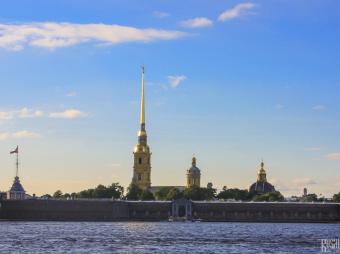
Peter and Paul Fortress
- Zayachy Island
- Gorkovskaya, Sportivnaya
- http://www.spbmuseum.ru/
- 10:00 - 18:00 (some exhibitions close earlier). Closed on Wednesdays.
The very core of St Petersburg is considered to be the Peter and Paul (Petropavlovskaya) Fortress which is the original fortress founded by Peter the Great in 1703 marking the beginning of his new northern capital. It was established on Zayachy Island (Hare Island) to protect the proposed new capital from Sweden which was at war with Russia at the time. The fortress was rebuilt in stone between 1706 and 1740 according to designs by architect Domenico Trezzini. Over the next… Read more »
Peter the Great's Cabin
- 6 Petrovskaya Naberezhnaya
- Gorkovskaya
- http://www.rusmuseum.ru/
- 10:00 - 18:00 (Thursdays: 13:00 - 21:00). Closed on Tuesdays.
Situated inside a brick building is a small wooden cabin which is the oldest surviving building in St Petersburg. It was built in just three days in May 1703 to serve as a residence for Peter the Great. After the construction of the Winter and Summer Palaces it ceased to be used as a residence, however in 1777 Empress Catherine the Great ordered the construction of a protective cover for the cabin. This was later replaced in 1844 with a brick building to protect the cabin from the… Read more »
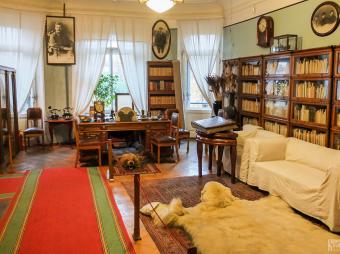
Sergey Kirov Apartment-Museum
- 26-28 Kamennoostrovsky Prospekt
- Petrogradskaya
- http://www.spbmuseum.ru
Sergey Kirov was a Bolshevik leader who headed the Communist Party in Leningrad. His assassination in 1934 led to show trials and the Great Purge. The apartment where he lived from 1926 until his death has since been preserved as an apartment-museum. If you have any interest in this era, the museum is a must, but, even if you don't, it really is worth visiting to see this beautiful Soviet style apartment for the Bolshevik elite. The 200 square metre apartment consists of a study,… Read more »
Solovetsky Stone Memorial
- Troitskaya Ploschad
- Gorkovskaya
St Petersburg's memorial to victims of political repression in the Soviet Union takes the form of a large boulder from the Solovetsky Islands. It is symbolic as the very first Gulag camp was set up on these island, but it is nevertheless rather underwhelming considered the scale of the repression. The boulder was placed here in 2002. Previously the wooden Trinity Petrovksy Cathedral, which was founded by Peter the Great in 1709, stood here until it was destroyed by the Bolsheviks… Read more »
St Vladimir's Cathedral
- 26 Ulitsa Blokhina
- Sportivnaya
- http://www.vladimirskysobor.ru/
The small Knyaz-Vladimirsky Public Gardens between Prospekt Dobrolyubova and Ulitsa Blokhina in the west of Petrogradsky Island are named after the cathedral located there - St Vladimir's Cathedral. The cathedral is dedicated to Grand Prince Vladimir the Great who was later canonised by the Russian Orthodox Church. The first church to stand here was built out of wood in 1708 and dedicated to the Dormition of Virgin Mary. This was replaced in 1719 by a news church built out of… Read more »
On the Vyborgskaya Side
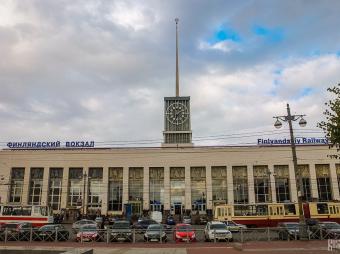
Finlyandsky Railway Station
- Ploschad Lenina
- Ploschad Lenina
St Petersburg's Finlyandsky Railway Station, as its name suggests, serves trains heading towards Helsinki and Vyborg. Suburban trains from here also leave for Vyborg, Primorsk, Lake Ladoga and Repino. The station was opened in 1870 when Finland was a grand duchy of the Russian Empire. The station is especially associated with the October Revolution as Lenin arrived here in 1917 upon returning from Germany. It also became the end of the Road of Life during the Siege of Leningrad… Read more »
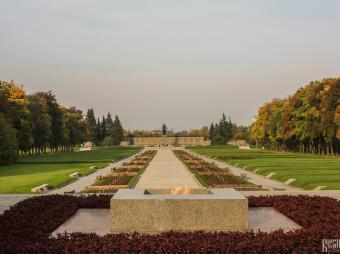
Piskaryovskoe Memorial Cemetery
- 72 Prospekt Nepokorennykh
- Ploschad Muzhestva
- http://www.pmemorial.ru/memorial
- 09:00 - 18:00. Cemetery open until 21:00 in spring and summer months.
One of the most sombre places in St Petersburg is the Piskaryovskoe Memorial Cemetery. The cemetery was established in 1939 and during the Siege of Leningrad thousands of bodies were bought here each month which reached its peak in February 1942 when more than 10,000 bodies were brought here. In total around half a million people are buried here, predominantly citizens who perished during the Siege but also around 70,000 soldiers who died defending the city. The bodies were… Read more »
St Sampson's Cathedral
- 41 Bolshoi Sampsonievsky Prospekt
- Vyborgskaya
- http://cathedral.ru/
- 10:30 - 18:00. Closed on Wednesdays.
St Sampson's Cathedral is one of the oldest cathedrals in St Petersburg. The original wooden version of the cathedral was built in 1710 in honour of St Sampson the Hospitable as on St Sampson's feast day in 1709, Peter the Great defeated King Charles XII of Sweden at the Battle of Poltava. This was replaced in 1740 by the current version which was designed by Pietro Antonio Trezzini. There is a belief that Catherine the Great secretly married Grigory Potyomkin here in 1774. The… Read more »
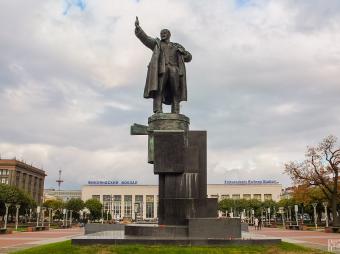
Vladimir Lenin Monument
- Ploschad Lenina
- Ploschad Lenina
The centre of Ploschad Lenina (Lenin Square) is marked by St Petersburg's main statue of Vladimir Lenin. The location of the statue is significant as it stands outside Finlyandsky Railway Station where Vladimir Lenin arrived on 3 April 1917 (new style: 16 April) after returning from Germany. Another odd coincidence is that the station was opened in 1870 on what was then Ulitsa Simbirskaya - Lenin was born in 1870 in Simbirsk. The statue was erected in 1926. In 2009 it became a… Read more »
On Vasilievsky Island: Around Prospekt Bolshoi
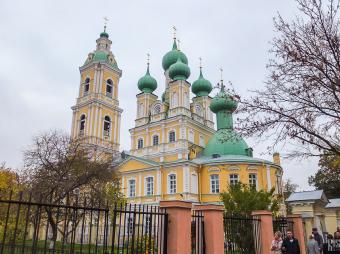
Annunciation Church
- 67, 7-ya Liniya
- Vasileostrovskaya
- http://hramblag.spb.ru/
The first church in this part of the Vasilievsky Island was built here out of wood between 1741 and 1742. The current stone version was built next to the original between 1750 and 1762 in the baroque style. The architect behind both churches was Giuseppe Trezzini. Upon the completion of the new church, the wooden one was demolished. In the 1780s a four-tier bell tower was added on. In 1936 the church was closed and used as a store. It was only returned to the Orthodox Church in… Read more »
Arkhip Kuindzhi Apartment-Museum
- apartment 11, 1/10 Birzhevoi Pereulok
- Vasileoostrovskaya
- http://www.nimrah.ru/muskuin/
- 12:00 - 17:00 on Wednesdays, Fridays and Saturdays.
Arkhip Kuindzhi was a Russian/Ukrainian painter especially famous for landscapes and also a member of the Peredvizhniki movement which took art exhibitions around the country. In 1991, on the 150th anniversary of his birth, the apartment where Kuindzhi lived for the last 13 years of his life was turned into a museum. The highlight of the museum in the workshop which enjoys great views of the city. The museum is run as a branch of the scientific and research museum of the Russian… Read more »
Geological Museum
- 74 Sredny Prospekt
- Vasileostrovskaya
- http://www.vsegei.ru/ru/structure/information/museum/
- 10:00 - 17:00. Closed on weekends and the last Friday of the month.
The Geological Museum on Vasilievsky Island is run by and located inside the Aleksandr Karpinsky All-Russian Scientific and Research Geological Institute. The institute is known by its Russian initialism of VSEGEY (which rather amusingly spells out 'everybody is gay' in Russian). The museum consists of one giant hall filled with thousands of examples of rocks, as well as the odd fossil and dinosaur skeleton. Its main attraction though is the large map of the Soviet Union which… Read more »
Narodovolets D-2 Submarine Museum
- 10 Shkipersky Protok
- Vasilieostrovskaya
- http://navalmuseum.ru/branch.php
- 10:00 - 18:00. Closed on Mondays and Tuesdays.
The Narodovolets D-2 submarine is a Decembrist-class submarine which was launched in 1929 as part of the Soviet Baltic Fleet. It saw active service during the Second World War carrying out torpedo attacks. It continued its service up until 1956. In 1989 it was decided to turn the submarine into a museum which was finally opened in 1993 as a branch of the Central Naval Museum, allowing visitors to see the authentic interior of a Second World War era submarine. Read more »
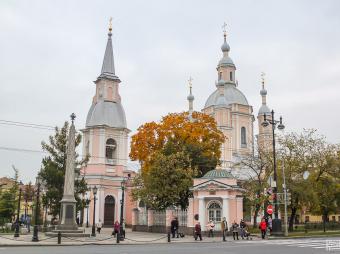
St Andrew's Cathedral
- 21/11 Bolshoy Prospekt
- Vasilieostrovskaya
- http://andrew-sobor.ru/
The original plan for a cathedral on Vasilievsky Island was first planned during the reign of Peter the Great, but this plan was shelved upon Peter's death. Instead a wooden church dedicated to St Andrew was built between 1729 and 1731 upon the order of Peter's wife Empress Catherine I and according to a project by architect Giuseppe Trezzini. In 1761 the cathedral was struck by lightning and burned to the ground. A new stone structure was built in the baroque style between 1764… Read more »
On Vasilievsky Island: Around Universitetskaya Naberezhnaya
Academy of Art Museum
- 17 Universitetskaya Naberezhnaya
- Vasilieostrovskaya
- http://www.nimrah.ru/
- 11:00 - 19:00. Closed Mondays and Tuesdays.
The Academy of Art was founded in 1757 by Ivan Shuvalov as the Imperial Academy of Art. Its headquarters were built on Universitetskaya Naberezhnaya between 1764 and 1772 and itself is a monument of early classical architecture. However in 1947 the headquarters were moved to Moscow, and the building's three floors are now used to hold a museum of fine art. The first floor holds art of the antique world and the second floor holds work by masters who were studied at the academy. The… Read more »
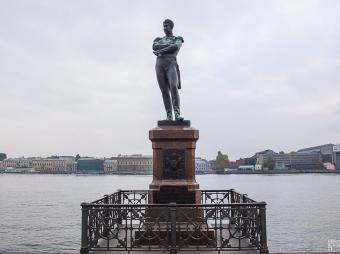
Admiral Ivan Kruzenshtern Monument
- 17 Naberezhnaya Leytenanta Shmidta
- Vasileostrovskaya
Ivan Kruzenshtern was a Baltic German explorer and admiral who was born in the Russian Governorate of Estonia as Adam Johann von Krusenstern. He later joined the imperial army and led a voyage to the Far East and the first Russian circumnavigation of the earth. This monument of the admiral was installed in 1873 outside the St Petersburg Naval institute. Read more »
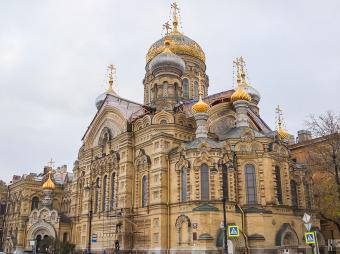
Dormition Church of the Optina Hermitage Podvorye
- 27 Naberezhnaya Leytenanta Shmidta
- Vasileostrovskaya
- http://spb.optina.ru/
One of the most beautiful churches on the Vasilievsky Island is the Dormition Church which is part of the podvorye (embassy church) of the Svyato-Vvedenskaya Optina Hermitage in Kozelsk. The five-dome church was built in the Russian Revival architectural style between 1895 and 1897 according to a plan by architect Vasili Kosyakov. Before being attached to the Optina Hermitage, the podvorye served the Kievo-Pecherskaya Lavra in Kiev and before than the Troitse-Sergieva Lavra in… Read more »
Ice-Breaker Krasin Museum
- Intersection of Naberezhnaya Leytenanta Shmidta and 22-23-ya Linii
- Vasilieostrovskaya
- http://www.krassin.ru/
- 11:00 - 18:00. Closed on Mondays and Tuesdays and the last Wednesday of the month. Excursions held hourly on the hour.
The ice-breaker Krasin has had an very interesting history since being built in Britain in 1916 for the Russian Imperial Navy. It was originally named Svyatogor after the mythical knight of Russian folk stories. The British Royal Navy then scuttled to ship during the intervention of the 1918, it was then later raised and used by the Royal Navy in the White Sea. As part of the Anglo-Soviet Trade Agreement of 1921, which was signed on behalf of Russian by diplomat Leonid Krasin, the… Read more »
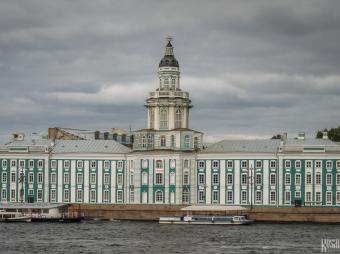
Kunstkamera
- 3 Universitetskaya Naberezhnaya
- Admiralteyskaya, Sportivnaya, Vasileostrovskaya
- http://www.kunstkamera.ru/
- 11:00 - 18:00. Closed on Mondays and the last Tuesday of the month.
The Peter the Great Museum of Anthropology and Ethnography is almost exclusively known by its original name of the Kunstkamera. It was founded by Peter the Great in 1716 as a cabinet of curiosities and the building where is it still housed was completed in 1727. Peter the Great had a fascination for collecting examples of deformed human and animal deformities, included deformed foetuses, and not just out of morbid curiosity. He hoped his collection would educate his people and… Read more »
Menshikov Palace
- 15 Universitetskaya Naberezhnaya
- Admiralteyskaya, Vasileostrovskaya
- http://www.hermitagemuseum.org/html_Ru/03/hm3_9.html
- 10:30 - 18:00 (Sundays: 10:30 - 17:00). Closed on Mondays.
The Menshikov Palace was built between 1710 and 1727 on the orders of Prince Aleksandr Menshikov, the first governor of St Petersburg, making it one of the oldest surviving buildings in the city. It first became a museum in the 1880s, but this was closed in 1924. After the building was extensively restored, it was reopened as a museum in 1981 as part of the State Hermitage Museum displaying the palace's interior and items of the Russian emperors and noble families, including items… Read more »
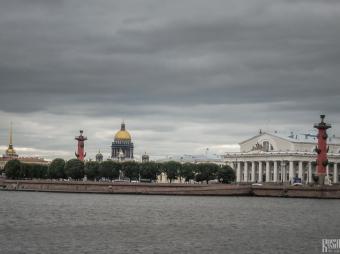
Rostral Columns on the Strelka
- Birzhevaya Ploschad
- Admiralteyskaya, Sportivnaya, Vasileostrovskaya
The eastern tip of Vasilievsky Island is known as the strelka which literally means 'arrow'. The strelka's two 32 metre rostral columns are now symbols of the city and feature on the RUB 50 note. They were erected in 1815 and were used as lighthouses up until 1885. There are two statues of figures at the base of each column which are personifications of Russian Rivers. The northern column has the Volga and the Dnieper and the southern column has the Volkhov and the Neva. The… Read more »
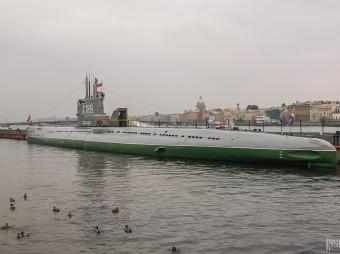
S-189 Submarine Museum
- Naberezhnaya Leytenanta Shmidta
- Vasileostrovskaya
- http://museum-s-189.ru/
- 11:00 - 19:00. Closed on Mondays and Tuesdays.
The S-189 Submarine was built in 1954 and served 35 years before being decommissioned in 1990. In 1999 it was sunk off the port of Krondstadt but raised in 2005 and restored. In 2010 it was opened to the public as a floating museum, giving visitors the opportunity to look around the submarine which is classified by NATO as a Whiskey-class submarine. Read more »
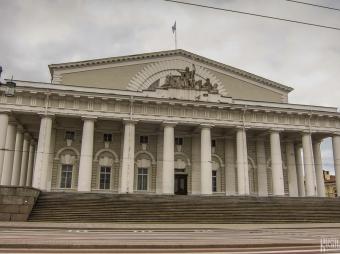
Stock Exchange Building
- 4 Birzhevsaya Ploschad
- Admiralteyskaya, Sportivnaya, Vasileostrovskaya
The tip of Vasilievsky Island, which is known as the Strelka, is dominated by the grand building of the Old St Petersburg Stock Exchange. It was built between 1805 and 1810 and inspired by an ancient Greek temple. The chief architect was Frenchman Thomas de Thomon. After the Revolution the Stock Exchange was closed and from 1939 the building was used to house the Central Naval Museum, which remained here up 2010 when it moved to new premises in the Kryukovy Naval Barracks. There… Read more »
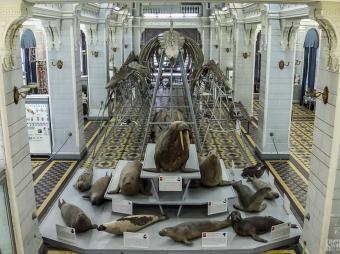
Zoological Museum
- 1 Universitetskaya Naberezhnaya
- Admiralteyskaya, Sportivnaya, Vasileostrovskaya
- http://www.zin.ru/museum/
- 11:00 - 18:00. Closed on Tuesdays and public holidays.
St Petersburg's Zoological Museum is run as part of the Zoological Institute of the Russian Academy of Science and was opened in 1832 upon being separated from the Kuntskamera. The museum consists of three halls which display various skeletons and stuffed animals, including examples of birds, insects, mammals, fish, reptiles and amphibians. The most impressive exhibits are the skeleton of a blue whale and Dima the baby mammoth (when not on tour), which was unearthed in 1977 in the… Read more »
On Yelagin Island
Kirov Central Park
- Yelagin Ostrov
- Staraya Derevnya, Krestovsky Ostrov
In 1932 the whole of Yelagin Island, including the former estate park of the Yelagin Palace, was turned into a park of culture and rest. The park was later named in honour of Sergey Kirov after his assassination in 1934. The park features various monuments (including one of Sergey Kirov), cafes and beaches. Read more »
Museum of Glass Art
- 2 Yelagin Ostrov
- Staraya Derevnya, Krestovsky Ostrov
- 10:00 - 18:00. Closed on Mondays and the last Tuesday of the month.
Housed in what was once the orangery of the Yelagin Palace is the Museum of Glass Art which displays products of the Leningrad Glass Art Factory. The factory was founded by sculptress Vera Mukhina in 1940 and remained in operation until 1997. The museum has thousands of exhibits ranging from domestic glassware and mirrors to glass sculptures and architectural features. The museum also details the process of moulding and cutting glass. Read more »
Yelagin Palace
- 4 Yelagin Ostrov
- Staraya Derevnya, Krestovsky Ostrov
- 10:00 - 18:00. Closed on Mondays and the last Tuesday of the month.
The Yelagin Palace was originally built between 1785 and 1790 for the historian Ivan Yelagin. In the early 19th century it was purchased by Emperor Alexander I who had it reconstructed to serve as a summer residence for his mother Empress Dowager Maria Fyodorovna who could no longer manage the trips to the summer palaces outside St Petersburg. The work was completed in 1822. After the death of Maria Fyodorovna in 1828 the palace's status decreased and it was often overlooked. In… Read more »